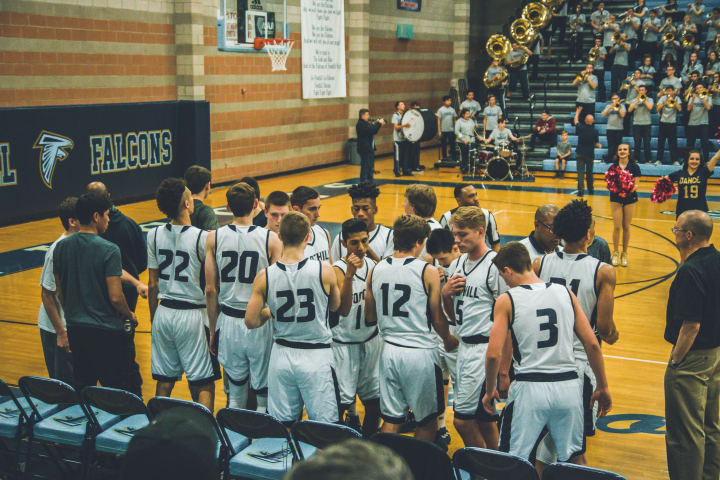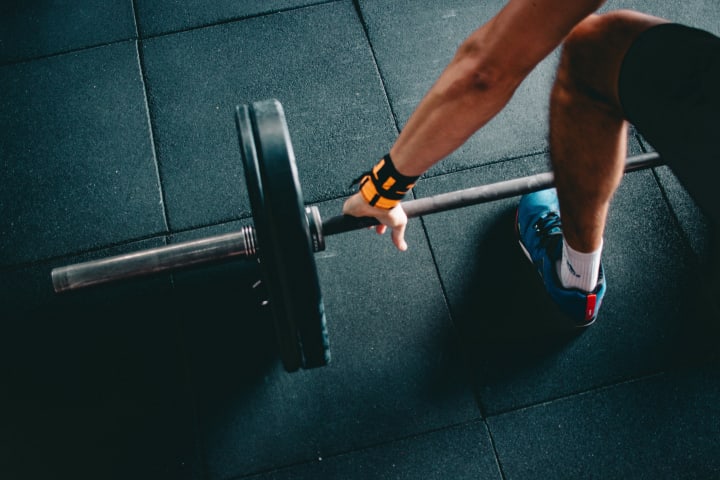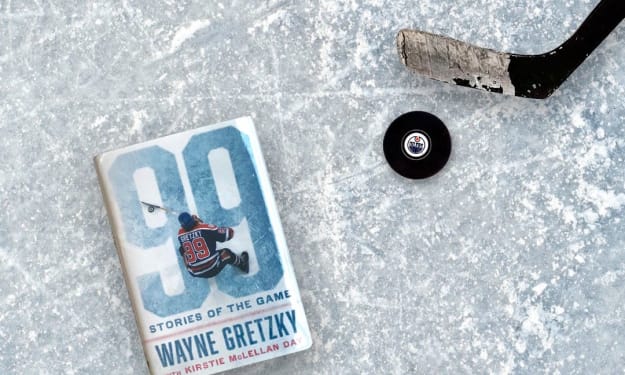I’m a High School Basketball Coach. Here’s How We Cut Player Injuries Down in One Season
Sometimes, a single change can make all the difference in a team’s performance.

I’ve been a high school basketball coach for three years now, and I’ve learned a thing or two about working with the team. While it’s been a number of years since our last big championship, the team has been in the upper ranks in our region and has been steadily rising. Our core principles of teamwork, sportsmanship, and respect have brought us far, and there’s a good camaraderie among the boys. I had been feeling great about my role as head coach and confident in my ability to lead the team deep into the playoffs and, potentially, a championship trophy.
There was, however, an issue that I almost didn’t notice until it came to a head last season. The number of injuries on my time was creeping up every year, and it was starting to become a real source of worry, especially after I had to start benching some of my best players. Luckily, I was able to find a solution and get my team back on track. Here’s the story of how my team used VKTRY insoles to bounce back from an injury-prone season to becoming better than ever.
Noticing the Problem

Going into coaching, I already knew some of the most common injuries of the sport. If you watch a couple seasons of play at any level, you’ll begin to see a pattern: foot and ankle injuries are far and away the most common injury for basketball players. This is obviously unfortunate, but hardly surprising since it seems like some of the shoe companies have removed support and structure from their products. Basketball demands lightning fast reflexes and quick movements executed with great precision. Players’ feet are constantly moving around the court, and with ten people in close quarters, basketball players are at high risk of rolling or twisting their ankle, landing wrong, getting hit at a bad angle, and even getting stepped on.
Only slightly less common than foot and ankle injuries are hip, thigh, and knee injuries. Again, everything below the belt is at high risk because of the inherent nature of the game. For years, most players and coaches have simply accepted these injuries as an unavoidable hazard of the game. Up until recently, I was in this same boat. I was obviously concerned about any injuries my players got—I mean, what coach wouldn’t be? But I was mistakenly under the impression that there was nothing I could really do to combat the steady stream of minor injuries plaguing my team. I finally changed my tune last year, when my team experienced several poorly-timed and truly heartbreaking injuries.
Big Game Blues

Last year, my team was having a great season. My boys were dedicated in practice and the results showed during their first few games. Throughout the early weeks of the season, they were working as a unit, using their heads, and winning games. Despite having a relatively young team, I started to feel pretty optimistic about our chances in the playoffs. The year prior, we finished the season in fourth place overall, and now some of my best players were reaching their prime as juniors and seniors.
A couple months into the season, however, our luck started to turn. One of my best players experienced a terrible ankle sprain halfway into the first quarter of an important game. He ended up needing to be carried off the court, and he was later taken to the hospital for x-rays. Thankfully, there weren’t any broken bones, but he still had a long recovery ahead of him. He was effectively done for the season, which as a senior meant he had played his last game ever with our team.
Before all the x-rays and heartbreak, the spectacle and uncertainty in the moment threw the whole team—myself included—off its rhythm. We were all thinking about our injured teammate instead of focusing on the game, and we lost pretty handily to a team we should have easily beaten. And here’s where I’ll take a moment to say that, no, winning isn’t everything, and you can absolutely have a rewarding experience as a young student athlete regardless of your win/lose ratio. But when you have a team that works as hard as mine did, you feel so guilty as a coach for not being able to give your kids the winning experience they deserve.
Obviously my players were far from thrilled with our sudden change in fortune, but they continued to handle it in stride. We started losing games more often now that one of our best players was riding the bench, but we didn’t let it affect our spirits. I was (and still am) so unbelievably proud of my team for continuing to show optimism and sportsmanship in the face of these difficulties and setbacks. Their positive attitude is what inspired me to work even harder to find a way to fix this issue.
Temporary Fixes

Education budgets in the US being what they are, my first attempts at reducing my players’ risk of injury were all based on what I could do for free. I did my research and discovered several techniques to help prevent injuries, especially in the lower extremities. The first step I took was dedicating more time to stretching. In previous seasons, I had generally allowed my players to stretch themselves as they saw fit. After learning that poor stretching techniques leave athletes vulnerable to all sorts of muscle injuries, I implemented a ten-minute group stretching regimen. After having the team run a few laps, we circled up and performed a series of hand-picked stretches, with special consideration to proper form.
In addition to the extra time spent stretching, I also took a page out of Steph Curry’s book and encouraged my players to up their strength training, especially for their core muscles. There are only so many hours in a day, and even fewer in your average high school basketball practice, but I managed to take the team to our high school’s weight room on a couple occasions. When we met for weight days, I focused on building proper weightlifting techniques so that my kids could hopefully head back to the gym and build their strength in their downtime.
I believe these techniques helped to an extent. In any case, they certainly couldn’t have hurt my players’ performance in any way. But My senior player was still out for the season, and he was often joined by one or two other players with more minor foot and toe injuries. My focus on injury-prevention techniques also took away from our time practicing basketball fundamentals as a team (a necessary sacrifice). As a result of all these factors, we began losing more often than we were winning, and I knew I needed to find a better solution.
Searching for a Solution
By this point, my search felt personal. My players might as well be my children, and I couldn’t stand to see them in pain again—both the physical pain of their injuries and the emotional pain of being forced to ride the bench at important times . We all got into better stretching habits, but I wasn’t satisfied that I was doing everything I could to keep my players protected. I began to research injury-reducing athletic gear to see if anything on the market looked worth consideration .
I wasn’t really sure what I was looking for, to be honest. But eventually I came upon a product that seemed like a perfect fit, specially designed just for the issues I was having with my team. The product is a high-performance athletic insole from a company called VKTRY.
Secret Weapon
When I first came upon the VKTRY advertisement, I was skeptical. But their website provides many testimonials from professional and college-level athletes as well as transparent 3rd-party research. One figure that caught my attention right away was a prominent statistic on the VKTRY website: “41% Less Foot & Toe Injuries.” This number represents data gathered from 263 NCAA athletes over four years: three seasons with normal equipment, and the fourth with VKTRY insoles. Once the insoles were introduced, they nearly halved the instances of these sorts of injuries.
VKTRY insoles aren’t just for reducing injury, either. They are produced using a high quality carbon-fiber base formed into a patented curved shape that is designed to make you literally run faster and jump higher. Now, it’s not that my players needed a performance boost—I’m already proud of their talent and work ethic—but if these features came as a bonus alongside the extra protection, then who am I to turn that down?
After reading all of the studies and testimonials, I realized how amazing it would be if my team could harness just some of the potential of this product. I became convinced that “VK’s” were the secret weapon I needed to help protect my players, so my assistant coach and I made the decision to invest in purchasing six pairs of VKTRY Performance Insoles for our seniors.
Results So Far
After a few months of wearing VKTRY Performance Insoles, my team has experienced a stark reduction in foot-related injuries and a noticeable increase in performance. Players who dealt with various injuries last year have told me they feel surer and more stable on their feet now that they have their VKs.
To be fair, it’s not like I’ve done clinical case studies with my team, but just looking at the improvement between last season and this season so far and hearing the comments from my players, the improvement is hard to deny. Last year, I had two players who chronically got minor lower leg injuries. They started in far more games than they finished, being forced to sit on the sidelines with ice packs during critical moments of important games. This year, with VKTRY, they have been able to recover much more efficiently, and they haven’t had to ride the bench once.
While our school budget is tight, I have let all the boys and their parents know about this new sports tech. players on the team have had similar positive experiences with the new insoles, and it’s clear that this investment was worth it. I’m so proud of my boys for their resilience, and I can’t wait to see what new heights they reach this season. VKTRY Performance Insoles have allowed us to move on from our injury-prone past and keep our minds focused on the game.
About the Creator
Connor Brighton
Love sports and travel! Fan of almost every major sport and a soon to be world-renowned traveler (mostly interested in the food and drink of other cultures!)






Comments
There are no comments for this story
Be the first to respond and start the conversation.